
- Home
- Mattresses
- Twin
Twin size mattresses
A better Twin size mattress for all sleepers
Overview
Twin mattresses measure 38 inches by 75 inches and are a popular choice for children, teens, and single adults with limited space. These mattresses are perfect for smaller bedrooms, bunk beds, and daybeds. They're also a great option for growing kids who have outgrown their cribs but aren't quite ready for a larger bed. Browse our twin size mattresses, starting at $599.
- Size
- Price
- All
- $599 - $1000
- $1001 - $1600
- $1601 - $2500
- Mattress type
- Packages
- Comfort
- Best for
- Height profile

- Firm feel
- 2" of Bio-Pur®
- 8" of Bio-Core®
- Soft, breathable cover
- Sturdy edges

- Medium-firm feel
- 2" of Bio-Pur®
- 3" of HIVE®
- 7" of Bio-Core®
- Ultra-breathable comfort
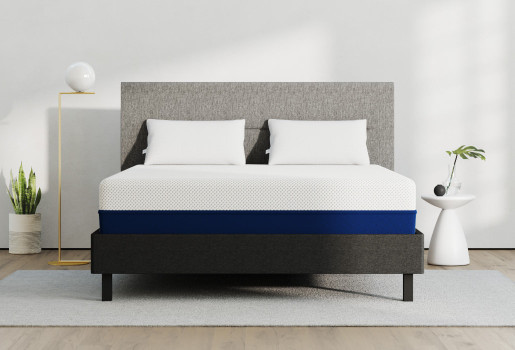
- Medium feel
- 3" of Bio-Pur®
- 2" of HIVE®
- 7" of Bio-Core®
- Blends comfort and support

- Medium feel with a bounce
- 3" of Bio-Pur®
- 8" of Zoned Pocketed Coils
- 1" of Durable Base Foam
- Ultra-soft cover
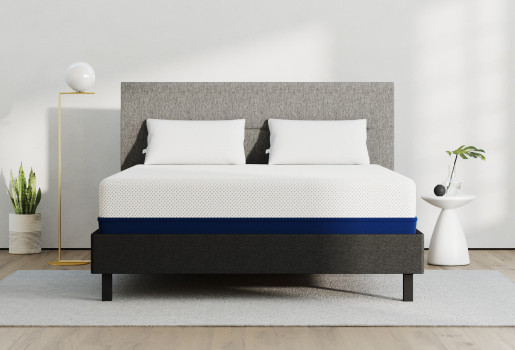
- Offers cloud-like comfort
- 4" of Bio-Pur
- 1" of HIVE
- 7" of Bio-Core
- Softness without sinkage
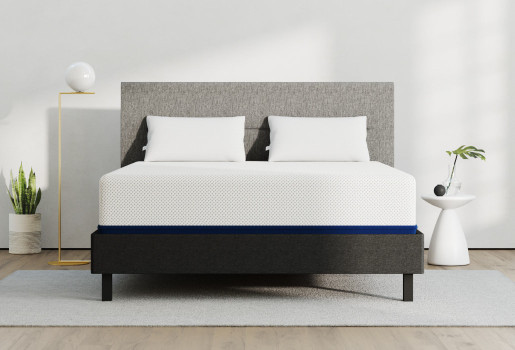
- Soft feel
- 3" of Bio-Pur®
- 2" of Active Flex
- 2" of HIVE®
- 7" of Bio-Core®
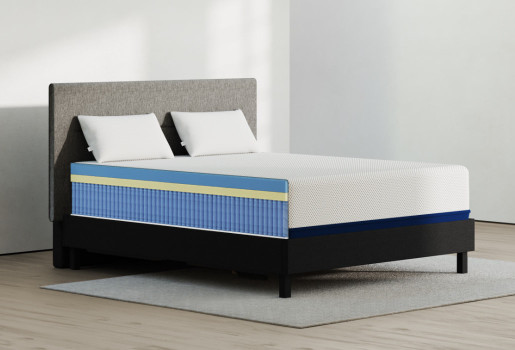
- Blends cushion and bounce
- 3" of Bio-Pur®
- 2" of Bouncy Active Flex
- 8" of Zoned Pocketed Coils
- 1" of Durable Base Foam
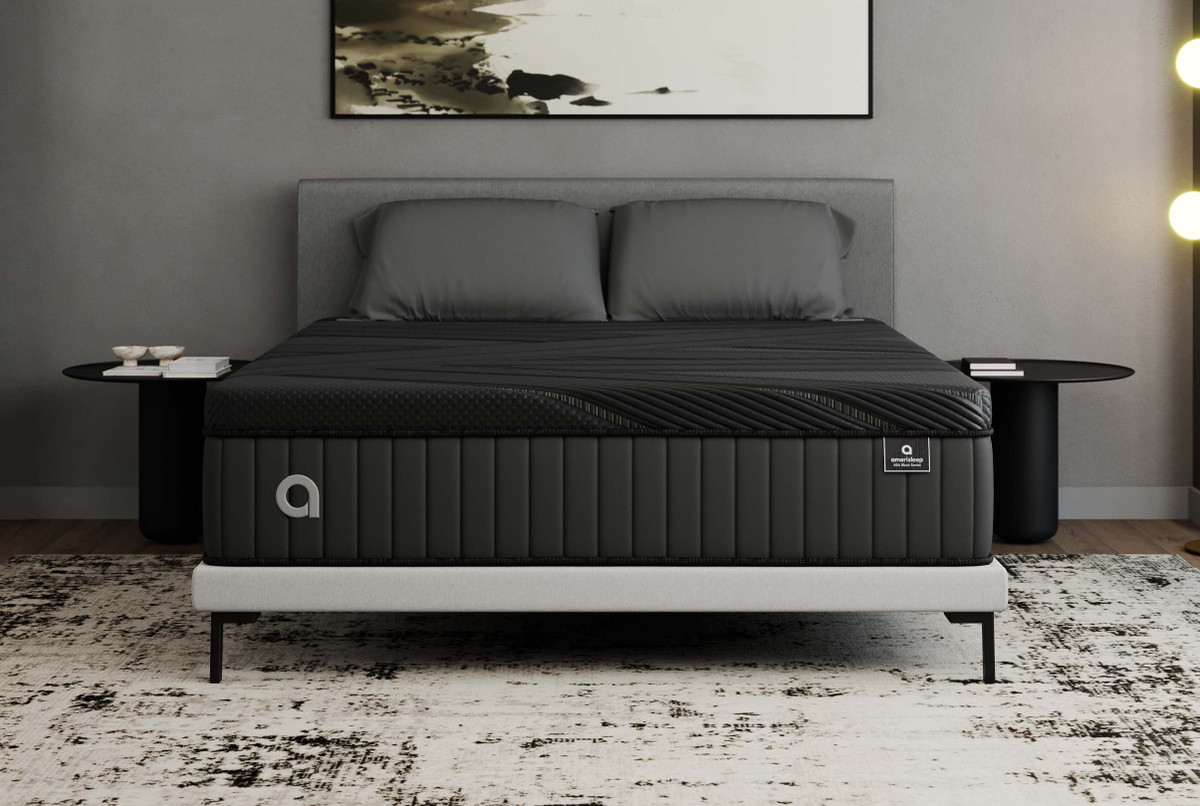
- Available in Plush Soft, Luxury Firm, and Firm for personalized comfort.
- 3" of Bio-Pur® memory foam
- CryoCool™ cover for cooling comfort
- TitanAir™ Layer for advanced airflow
- Deep pressure relief for side sleepers

- Made with GOTS® Organic Cotton
- 1" Organic Wool
- 2" Natural Talalay Latex - Soft
- 1" Natural Talalay Latex - Medium
- 8" Coil Unit with Edge Support
- 1" Wool Border

- Plush feel
- 3" Natural Talalay Latex Topper
- 8" Coil Unit with Edge Support
- Organic wool and GOTS® cotton cover
- Eco-friendly luxury
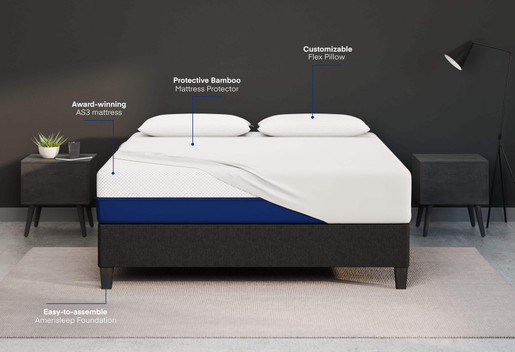
- Award‑winning AS3 mattress featuring eco‑friendly, cooling Bio‑Pur® memory foam
- Amerisleep Foundation that assembles in minutes with no tools and stands 13 inches tall
- Flex Pillow with hundreds of MicroFlex cushions for a custom‑made feel
- Bamboo Mattress Protector that guards against bacteria, dust mites, perspiration, and spills
![Reviews - Average of 4.7 stars]()
15,000+ Reviews
Average of 4.7 stars1Sleep Awards
WinnerBest Mattress
for Back PainBest Mattress to Buy
OnlineMasterpieces of Midnight Melatonin Replenishment
Sleep soundly every night on eco-friendly foam.
The Amerisleep twin may be the smallest mattress of the bunch, but it still contains breathable Bio-Pur® with supportive HIVE® technology to support your spine and back. This unique, plant-based foam bounces back quickly and reduces pressure points so you can sleep comfortably.
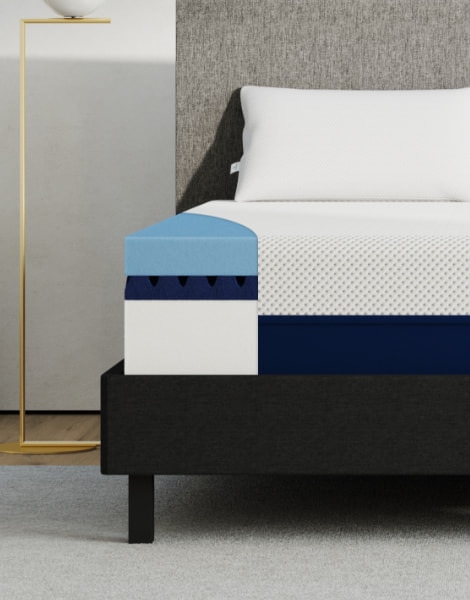

Sleeping without pain should be easy.
All Amerisleep mattresses are made to suit a number of sleeping styles and preferences, so nobody is excluded from a good night’s sleep. High-quality, eco-friendly foams work together to give you the healthiest, most comfortable sleep possible. All Amerisleep beds come with a 20-year warranty, free shipping, and a 100-night sleep trial. What are you waiting for?
Sleep comfortably every night on one of our mattresses.
Shop our mattressesWho should sleep on a twin size mattress?
Twin beds are perfect for young adults with smaller bedrooms, children, college students, or guest rooms.
The ideal size to fit in any space
Twin mattresses can go anywhere, from a dorm room to a small apartment.
Be prepared for unexpected guests
If you’ve got surprise guests, a twin size mattress is better than the couch!
Great for kids
Twin-size mattresses fit in small frames, trundle beds, bunk beds, or shared bedrooms.
How much does a high-quality twin size mattress cost?
Mattress shopping can be a pain, but if you go in with reasonable budget expectations, you’re more likely to have a smooth buying experience. A “luxury” twin size mattress may cost $2,000 or more, but most of the time, overpriced beds aren’t as high-quality as they might seem. On the other hand, cheap beds that come with promotions (BOGO or “buy one get one % off") are not likely to last very long, either.
First, let's get this out of the way: you don't have to spend thousands of dollars on a high-quality mattress. Beds that cost upwards of $3,000 may be marketed as the peak of luxury, but that's typically all the high price tag really signifies.
With that said, there are some added mattress features you may need to raise the price of a basic model. For instance, if you're looking for a bed with cooling technologies or added lower back support, these added materials tend to bump up the cost a little bit.

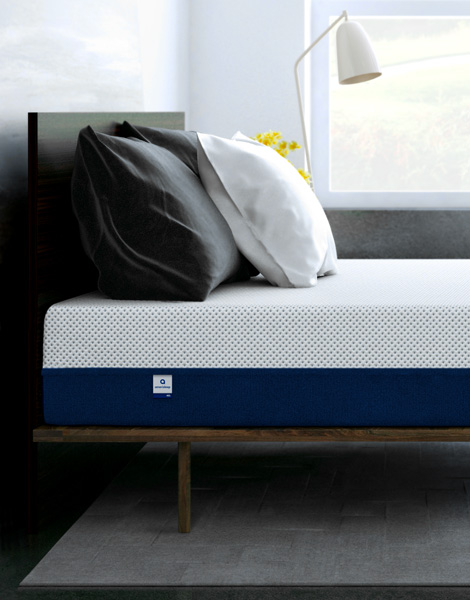
- Cooling technologies, such as gel memory foam, copper-infused foam, advanced open-cell foams, plant-based foam, or precision cut-channels and zoned support.
- Added edge support (either in the form of quilted pillow topstitching or poly-foam reinforcing the edges)
- A longer than average warranty (the mattress industry standard is a 10-year warranty)
- White glove delivery if included with purchase
- Brand name and reputation
- Amount and/or quality of materials (for example, softer beds use more layers of foam so they tend to cost more; hybrids cost more because they use a combination of coils and foam; natural latex mattresses cost more because of their sustainability and durability)
- All-natural materials, such as organic cotton, natural latex, or CertiPUR-US® certified foam, Greenguard Gold Certified foam, and so on
Common mattress features increasing mattress cost
- Cooling technologies, such as gel foam, copper-infused foam, or plant-based foam
- Proprietary foams or technologies (materials made exclusively by and for the brand)
- Edge support (in the form of poly foam or other materials reinforcing the edges)
- A quilted Euro top layer (Euro pillow tops are more expensive than plush pillow top mattresses because they contain higher quality materials)
- A longer than average warranty (average is 10 years)
- Thicker comfort foams (in general, softer beds use more layers, and are therefore more expensive)
- Eco-friendly materials, such as organic cotton, latex, or plant-based foams
| Mattress Type | Low End Price | High End Price |
|---|---|---|
| Foam | $250 | $4,000 |
| Innerspring | $300 | $3,000 |
| Hybrid | $250 | $4,000 |
| Latex | $300 | $4,000 |
What are the dimensions of a twin size mattress?
75 inches long by 38 inches wide.
Twin
38" x 75"
Twin XL
38" x 80"
Full
53" x 75"
Queen
60" x 80"
King
76" x 80"
Cal King
72" x 84"
Split King
38" x 80"(x2)
Which mattress size is best for me?
Twin - 38" x 75"
Kid's room, studio apartments
Twin XL - 38" x 80"
College dorm, studio apartments
Full - 53" x 75"
Kid's room, studio apartments
Queen - 60" x 80"
Master bedrooms, guest rooms
King - 76" x 80"
Extra large master bedrooms
Cal King - 72" x 84"
Extra large master bedrooms (10' x 12')
Split King - 38" x 80" (x2)
Master bedrooms, adjustable beds
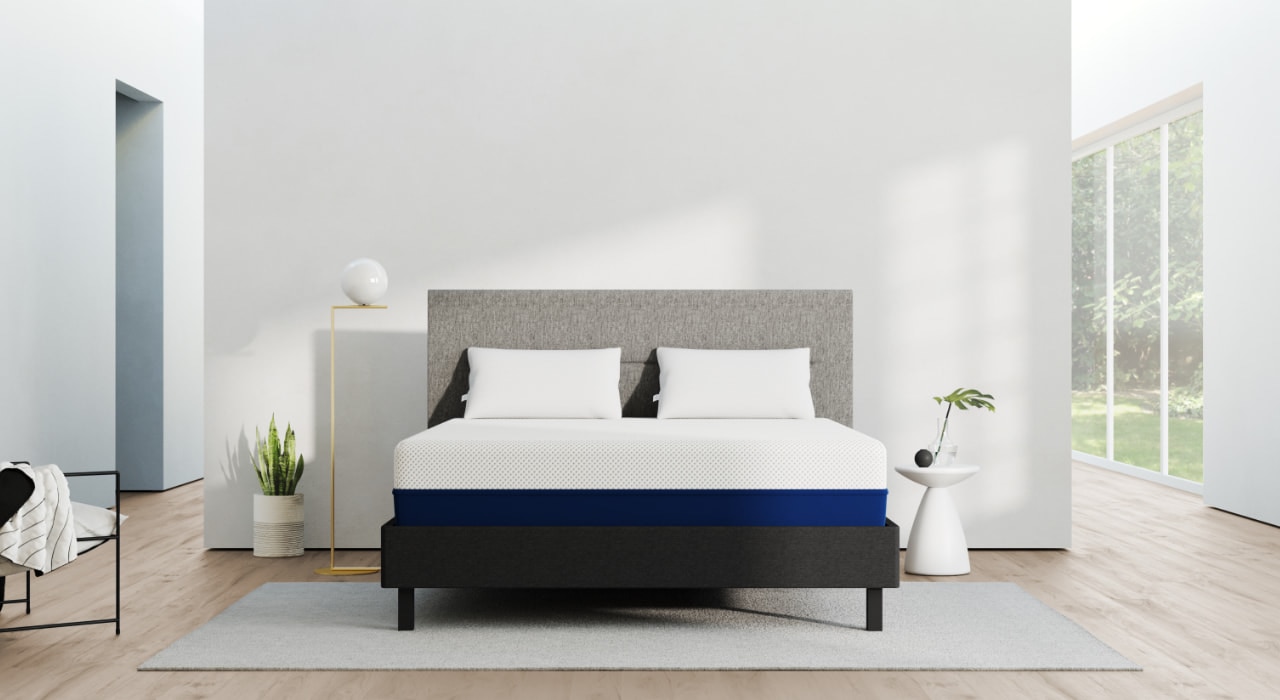
Can you get high-quality beds in a box?
Thanks to the new bed in a box trend, memory foam has become more and more popular because it’s easy to compress and roll into a small box for delivery. While eliminating the middleman of a retail store and overhead costs, some still wonder if beds in a box have comparable quality to the mattresses you can find in a store.
Let’s ease your mind by answering the most frequently asked questions surrounding this new trend:
- Will shipping the mattress in a box change its feel?
No matter if you bought a firm mattress or an ultra-plush one, the way it’s shipped to you shouldn’t change the feel. Mattress companies use special machines to carefully compress and roll the mattress without compromising the layers or firmness.
- How long do I have to wait before sleeping on my unboxed mattress?
Some brands recommend you do not sleep on your mattress for at least 24-48 hours after opening it to ensure it’s completely expanded. However, if you want to try it out immediately, it shouldn’t damage the mattress at all.
- What do I do if there’s a chemical smell?
Many memory foam beds come with a chemical smell, known as “off-gassing.” It’s harmless, but it can disrupt sleep if it doesn’t go away within a few days. If your bed still isn’t airing out a few days after you’ve opened it, that could be a sign of low-quality foams. Instead, look for mattresses made with plant-based foams that limit the amount of petrochemicals used in manufacturing.

Amerisleep Twin
Average twin from a showroom
- Free delivery to the lower 48 states
- Delivery usually not free
- Free returns within the sleep trial
- Free returns only if mattress is in its original condition
- 100-night, risk-free sleep trial
- No sleep trial
- 20-year warranty (10-year full replacement)
- 10-year full replacement
- Made with plant-based materials
- Foams made with petrochemicals
- Made in the USA*
- Origins not always known
- Manufactured with low VOCs
- Off-gassing odors
*Made in the USA of U.S. and imported components. Covers sewn in Canada.
How are Amerisleep mattresses different from memory foam beds?
Amerisleep makes their mattresses using high-quality materials made to last. Their 20-year warranty is one of the best in the industry and it’s built on a foundation of unique, proprietary foams engineered to give you the best sleep imaginable, no matter how you sleep.
Their signature Bio-Pur® foam— the top comfort layer in every Amerisleep mattress— contains castor oil, a plant-based foam that helps to reduce the familiar off-gassing smell associated with memory foam. The advanced open-cell foam allows more air to pass through, keeping you cool. Instead of infusing their foams with other cooling agents that may become ineffective, we simply make the foam itself more breathable and responsive.
The Affinity layer with HIVE® is present in every mattress except the AS1. It acts as a transition layer between the soft Bio-Pur® and the firm Bio-Core® support foam base layer. The hexagon-shaped cutouts in this layer are closer together in areas that need firmer support, such as the head, back and feet; they are spaced farther apart in the shoulders and hips where sleepers typically need more softness.
The 7-inch Bio-Core® layer at the bottom of each Amerisleep mattress prevents the softer top layers from sagging, so no matter how long you use it for, your Amerisleep mattress should not sag.
The Amerisleep AS5 has one layer the other beds in our lineup do not have— the Active Flex layer. The Active Flex sits between the Affinity layer and the Bio-Pur®. Because the AS5 is so soft, we needed another layer to ensure whoever slept on the bed didn’t feel stuck or like they were sinking. The Active Flex bounces back quickly, never sacrificing support for softness.
The soft and ultra-breathable cover on every Amerisleep mattress helps prevent overheating, so you can sleep your best each night.
Amerisleep vs. Other Mattress Types
| Benefits |
Amerisleep Mattress |
Innersring Mattress |
Traditional Memory Foam Mattress |
Hybrid Mattress |
Latex Mattress |
|---|---|---|---|---|---|
| Responsiveness | Bounces back in seconds | Bounces back very quickly | Slow to respond, results in "stuck" feeling | Responsive but prone to sagging | Very responsive |
| Pressure-Relief | Exceptional pressure relief | Little to no pressure relief | Good pressure relief | Some pressure relief | Good pressure relief |
| Cooling | More breathable than traditional memory foam | Cooling thanks to the coils in the base | Traps heat | Cooling thanks to the coils in the base | Cooling as long as top layers are aerated |
| Foam quality | Partially plant-based Bio-Pur® material | Usually made with poly-foam pillow tops | Foam usually made with petrochemicals | Not always consistent, depends on the type of foam used in the top layers | Depends on the type of latex used; synthetic latex breaks down faster than all-natural |
What are Amerisleep mattresses made of?
The eco-friendly, premium materials in every Amerisleep mattress allow us to offer customized comfort for a number of sleeping preferences.
- The soft and stretchy cover lets air through easily, helping you sleep cool all night.
- 3 inches of Bio-Pur® responds quickly while contouring to your specific shape and sleeping position.
- The 2-inch Affinity layer with HIVE® technology supports sensitive pressure points like the hips, shoulders, and back
- 7 inches of sturdy Bio-Core® extend the lifespan of this twin mattress beyond the typical 10 years

Frequently Asked Questions
Where can I put my new twin size bed?
The size of twin size beds makes them one of the most versatile mattresses. They can fit in a bunk bed, trundle bed, guest room, small apartment, dorm room, and more. Some of the more popular foundations used with a twin size bed are:
- Box spring:
You can use a box spring with an innerspring mattress and some hybrids, although we do not recommend using one with a foam bed. The wooden and/or metal in a box spring can cause the foam to droop and sag prematurely.
- Slatted base:
Slats connected with fabric or attached to the bed frame are another popular option, and they do not require a box spring. Simply place your mattress directly on top of the slats (make sure they are aligned and stabilized first). Amerisleep specifically recommends using our mattresses on slats no more than 3 inches apart to avoid any sagging.
- Platform Bed
A platform bed is a sleek, minimal option that works well with most mattress types. Keep in mind that if the base has no slats, airflow and breathability through the mattress might be an issue.
- Adjustable bed:
An adjustable bed may seem it’s only meant for those with chronic pain or sleep-disordered breathing issues such as snoring or sleep apnea. While adjustable beds can help with these problems, they’re also a great choice for anyone who just wants to sleep better. With an adjustable bed, you can elevate your head or legs for improved breathing, circulation, and posture. An adjustable base puts less pressure and stress on your back. Currently, Amerisleep offers an adjustable base for Twin XL, full, queen, and split king mattresses.
- Metal frame:
You can use your twin size bed on a metal frame as long as it has built-in support in the form of slats or a platform. If you want a headboard, most can be attached to a basic metal frame, but always check the manufacturer instructions for best compatibility.
Maybe you’re not sure which type of base will mesh with your home decor and you’d rather put your mattress directly on the floor— we recommend against this because it impedes airflow through the bottom of the mattress. To ensure you get a good night’s sleep, choose a strong, supportive bed foundation to go with your new twin size mattress.
Thinking about an adjustable bed? Check our adjustable bed package here
What is the best twin size mattress?
The best twin mattress for you largely depends on your sleeping position, as well as your budget, comfort preferences, and how much you plan to maintain it.
- Best Mattress for Side Sleepers:
Side sleepers are already in a relatively healthy position for minimal back pain and snoring, but they are prone to numbness or tingling in their limbs, especially if their mattress is too firm. That’s why most brands, including Amerisleep, recommend side sleepers choose a medium to soft mattress. Your body type can affect the feel of a mattress as well, so always choose one with plenty of pressure relief and sturdy support.
- Best Mattress for Back Sleepers:
Back sleepers aren’t at risk for misaligning their spines, but they can suffer from snoring or sleep apnea because of the way gravity presses down on the soft tissues of the throat. To maintain even support for their whole body, including their heads and necks, back sleepers need a firm or medium-firm mattress.
- Best Mattress for Stomach Sleepers:
Overall, we do not recommend stomach sleeping because of the strain it puts on the back and neck. However, if you’re set on sleeping this way, choose a firm or medium-firm mattress to keep your spine in a neutral position. If you’re ready to switch to the healthier side-sleeping position, you can use a body pillow to keep comfortable while you adjust.
What are the different types of mattresses?
While memory foam is certainly one of the more popular options, there are other choices for those who aren’t quite ready to take the memory foam plunge.
Memory Foam Mattresses
How is memory foam made? It all starts with polyurethane foam, and then other materials are added to give it a soft, viscoelastic feel (hence the name “viscoelastic foam”). Memory foam has an open-cell structure meant to give it a responsive, springy feel.
No memory foam mattress is made with 100% memory foam— that would be a very unsupportive bed indeed. Most often, the memory foam appears in the top comfort foam layer(s) and is then supported by a firmer foam, usually poly-foam. Additional layers are added depending on how soft the company wants the mattress to be.
Memory foam is largely popular because To offset the fact that high-density foam traps heat, many brands infuse their foams with cooling gels or other materials, boosting breathability and responsiveness.
Innerspring Mattresses
Innerspring beds use steel coils for their base and thin layers of poly-foam or memory foam in the comfort layers, also known as the pillow top or Euro-top. Innerspring mattresses are not known for their pressure relief or motion isolation (like memory foam), and they start to sag after only a few years.
Hybrid Mattresses
Hybrid mattresses are a combination of memory foam and innerspring beds. They contain more foam in the top layers than a typical innerspring, and the steel coils are often wrapped in fabric to reduce motion transfer.
Hybrids are sought after because they seem to have all the pros of innersprings and memory foam mattresses without their cons; however, the average lifespan of a hybrid mattress is only 1-2 years longer than an innerspring, so they may not be worth the extra cost.
Latex Mattresses
Like memory foam beds, latex mattresses are pressure-relieving, silent, and hypoallergenic. However, they have a bouncier, firmer feel to some and they typically cost more. Latex beds are not as readily available as the other mattress types, but if you can find one, you’ll probably like them for their durability— some latex beds can last for up to 15 years.
Before you choose your perfect twin size bed, consider the pros and cons of each mattress type.
| Benefits |
Amerisleep Mattress |
Innersring Mattress |
Traditional Memory Foam Mattress |
Hybrid Mattress |
Latex Mattress |
|---|---|---|---|---|---|
| Responsiveness | Bounces back in seconds | Bounces back very quickly | Slow to respond, results in "stuck" feeling | Responsive but prone to sagging | Very responsive |
| Pressure-Relief | Exceptional pressure relief | Little to no pressure relief | Good pressure relief | Some pressure relief | Good pressure relief |
| Cooling | More breathable than traditional memory foam | Cooling thanks to the coils in the base | Traps heat | Cooling thanks to the coils in the base | Cooling as long as top layers are aerated |
| Foam quality | Partially plant-based Bio-Pur® material | Usually made with poly-foam pillow tops | Foam usually made with petrochemicals | Not always consistent, depends on the type of foam used in the top layers | Depends on the type of latex used; synthetic latex breaks down faster than all-natural |
Are there different sized twin beds?
Queen and king size mattresses come in a few different variations, but twin size mattresses are only available in two types: twin and twin XL. A twin XL is a good option for a growing child, especially if you’re not planning on transitioning them out of that mattress until they leave for college. However, if you’re just using the twin for a guest room, a bunk bed, or a shared bedroom, a twin is a perfectly suitable choice.
Size Comparison:
| Twin | Twin XL |
|---|---|
| 38 inches wide, 74 inches long | 38 inches wide, 80 inches long |
How do I know which mattress firmness is best?
Maybe you’ve been sleeping on the same mattress your whole life and you’re still not sure which “firmness” will be most comfortable for you. We recommend referring to your sleeping position (discussed above) as well as your body weight. If you’re buying a twin, you’re probably not sharing your mattress with a partner, so you don’t need to worry about their weight or sleeping style affecting the firmness or feel.
Many mattress brands differentiate firmness using the firmness scale, which goes from 1-10, with 1 being plush and 10 being extra firm. In general, most mattresses don’t rate on the extreme ends of the scale— they fall between 3-8, with a little variance depending on the brand.
Firm (firmness scale: 8-9, AS1)
- Best for back sleepers and stomach sleepers who like a firm mattress with very little give
Medium-Firm (firmness scale: 6-8, AS2)
- Best for those with back pain
- Best for back and stomach sleepers who need extra pressure relief
- Best for heavyweight sleepers who prefer a firm feel
Medium (firmness scale: 5-7, AS3)
- Best for side sleepers and combo sleepers who prefer an even balance of softness and firm support
- Best for average weight sleepers
Medium-Soft (firmness scale: 4-5, AS4)
- Best for side and combo sleepers who need extra pressure-relief and softness
Soft (firmness scale 2-3, AS5)
- Best for heavyweight sleepers who prefer a soft bed
- Best for petite sleepers who prefer a soft bed
- Best for the dedicated side sleeper who needs extra pressure relief
How long should a good mattress last?
A high-quality mattress will last at least as long as its warranty, never lose support, and leave you waking up refreshed and well-rested every night. To maintain the quality of your new twin bed, always use a mattress protector or encasement; these will deter bed bugs, dust mites, and spills.
| Mattress Type | Average Lifespan |
|---|---|
| Amerisleep Mattresses | 15-20 years* |
| Traditional Memory Foam | 7-10 years |
| Innerspring | 5 years |
| Hybrid | 6-7 years |
You can tell a lot about how long a mattress will last by checking out the warranty. The mattress industry’s standard length warranty is 10 years, since most experts recommend switching out your mattress after about that long. However, many mattress types begin to show signs of sagging and deterioration before that point because the foams are poorly made, the base layer is not dense or thick enough, or the mattress is poorly protected from allergens, bed bugs, dust mites, or spills and stains.
If you’re planning on using your twin mattress in a guest room, you can expect it to last longer than average.
What should I look for in a mattress warranty?
The typical mattress warranty lasts about 10 years and it usually covers sagging below a certain depth as well as manufacturing defects. If the twin mattress you’re considering doesn’t come with a warranty, we suggest going elsewhere. Twin size beds need to withstand a lot of wear and tear, especially if they’re for a kid’s room or a daybed used for everyday lounging.
What if my twin mattress is too soft or too firm?
Most new mattresses require an adjustment period lasting around 20-30 days, and the sleep trial most often covers that and more. However, if you’ve passed the 100-night trial period and your mattress still feels too soft or firm, you can adjust it with a mattress topper. A couple of the most popular toppers include:
- Gel memory foam mattress topper:
infused with gel or gel beads, these toppers are meant to dissipate body heat while adding an extra layer of softness to your mattress.
- Convoluted foam mattress topper:
Also known as “egg-crate foam” because of its shape, this topper type is meant to add more support and contouring.
Amerisleep makes two different toppers: one for added softness and one for added support, depending on your needs. Both toppers are made with HIVE® technology, the ergonomic sleep system that simultaneously supports and eases pressure points.
Is a twin size bed the same size as a single bed?
Yes, a twin size and a single bed are the same size. The word “twin” in “twin size” simply refers to two single beds side by side, like you would find in a shared bedroom or dorm room.
Alternatives to Twin Mattresses
Twin XL
Sleepers of all ages
Twin XL mattresses are a fit for growing children, college students, and even single adults—they provide 5 extra inches of legroom to accommodate taller sleepers.Full
Sleepers who prefer wiggle room
Full mattresses are best for combination sleepers, those who like to sprawl, and those who co-sleep with a child or pet.Queen
Best mattress for couples
Queen mattresses are a popular choice amongst couples and single sleepers who prefer a large bed to get comfy.



